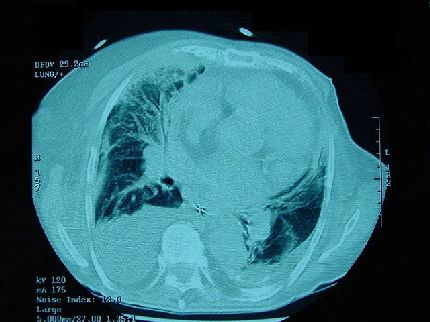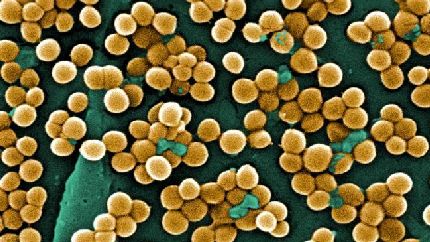
Author David Watson, BA Nursing, PGD Critical Care, SPQ Critical Care, Dip Nursing, a senior nurse offices, hospital emergency team Monklands Hospital, Eyrdri. SUMMARY Watson, D. (2008) Pneumonia 1: recognizing risk, signs and symptoms. Caring Times; 104: 4, 28BЂ "29. At the national level, the number of acute hospitalizations is growing (unscheduled care joint, 2005). In this group of patients, respiratory disease, is a major cause of acute admission, with the share of patients with pneumonia. Because of the nature of the disease, cases tend to peak in mid-winter, placing emphasis on value-added resources already stretched NHS. Incidence of pneumonia is often underestimated in clinical practice. However, it can very quickly compromise patientsBЂ ™ health and as a result of admission to critical care areas or even death. Not all cases of pneumonia requiring hospitalization, but they should be under close control at both ends of the age spectrum are the most vulnerable. For those patients who need hospitalization, they will on average stay for more than one week. Of those patients, about 10% require admission to intensive care or resuscitation. If the infection is left untreated, it carries a mortality rate more than 30%. The reasons are several causes pneumonia develops in patients. Pneumonia is defined as inflammation of the bronchioles and alveoli. Alveoli are filled with secretions and mucus, limiting gas exchange and, depending on the severity, resulting in hypoxia. Depending on the literature, pneumonia can be classified in two broad terms. These include: location / area light of the victim (eg, partial or bronchial) and another based on the pathogen (McFarlane et al, 2000). There are many organisms that can cause pneumonia BЂ "is a viral, bacterial or fungal in nature. Pneumonia fungal nature, tend to affect those patients with impaired immunity. In clinical practice, it is patients who have neutropenia and yielded fungal infection. Viral pneumonia results in the development of inflammation, which affects the alveoli, and bacterial pneumonia results in breakdown of the alveolar / capillary membrane. Bacterial pneumonia is the cumulative effect of the invasion of pathogenic BЂ "it may be acutely isolated incident or as an end point of another chronic disease process. Unsafe and nosocomial pneumonia acquired pneumonia and nosocomial pneumonia alternative terms used to classify infections. Pneumonia is classified as community acquired if symptoms present at admission or during the first 48 hours. Every year one person per 1000 population to hospital with community acquired pneumonia, which carries a mortality of 10% (Royal College of Surgeons, 2004). These categories are organisms that are likely to cause infection. The most common cause of pneumonia is the pneumococcus (Royal College of Surgeons, 2004), with other possible pathogens have chlamydia or mycoplasma pneumonia. Hospital pneumonia is the classification given to pneumonia that developed after 48 hours in the hospital or within 10 days after discharge from hospital. These common after surgery and 25BЂ "50% mortality. They are more
probably be attributed to gram-negative bacteria or staphylococcus, which have the potential to be serious (Royal College of Surgeons, 2004). Risk Factors There are many patients who are at risk of developing breast infection. Patients with existing disease such as renal failure or diabetes are at risk of infection. For these patients, it is desirable that they received a flu shot offered at least annually. Patients with known asthma and COPD should also be advised to be cautious. Those patients with weakened immune systems (HIV-positive patients, patients after transplantation and very young) are also at risk and should be carefully looked to minimize the impact of infection (Bellamy, 2006). Patients with a history of alcohol and substance abuse or who have poor nutrition and physical health are in danger of aspiration pneumonia, which may occur during the unconscious, as well as patients who have a passion. Aspiration pneumonia can be troublesome and require intensive treatment. Patients who intubation (tracheal tube is placed into the trachea) are at risk for pneumonia if infection control measures are not strictly adhered to. The normal process of breathing helps to prevent the penetration of bacteria. Nasal passages help filter out larger particles, and particles and particles removed by coughing and sneezing. For those very small particles that could get into the lungs, they are usually trapped in the mucous layer. Due to the nature of ventilation via endotracheal tube, a mechanism of security costs and bacteria can get into the alveoli (Woodrow and Row, 2003, Zak et al, 2002). Presentation As in all clinical settings, views may differ from patient to patient, and under the influence of existing disease processes, age and general health. It is important not to assume that only very young and very old die of pneumonia. It can also be life threatening in other age groups. Other signs and symptoms listed in Table 1. The severity of pneumonia can be classified using the CURB-65 score to be considered in Part 2 of the device >>. << However, the presence of other existing diseases should also be taken into account. When caring for patients with pneumonia or other infections, physicians should constantly vigilant for the development of sepsis / systemic inflammatory response syndrome (SIRS), with the main source of everything, but not always, chest. For those patients who are on the development of severe sepsis, mortality increased sharply (Laterre et al, 2005). Symptoms of sepsis include:
diarrhea. Patients must have at least two criteria of Box 2 is marked as being gentlemen. Conclusion Pneumonia is a potentially serious and sometimes life-threatening condition. It carries a significant mortality rate, especially in vulnerable or at risk patients. Those who are at risk should be offered preventive treatment, if necessary, such as vaccination. Doctors care for risk groups in the hospital should ensure that patients are carefully looked after to minimize the impact of infection. It is important that nurses know the signs and symptoms of pneumonia, to facilitate early detection and action. They must also know the signs and symptoms of sepsis, and understand the criteria for SIRS. Part 2 of this group, which discusses the treatment of pneumonia, will be published in next issue weekBЂ ™ s. Links Bellamy, R. (2006), Pneumocystis pneumonia in people with HIV. Clinical data of 15: 982BЂ "985. Laterre, PF, etc.
(2005) Severe community acquired pneumonia as a cause of severe sepsis: data PROWESS study. Intensive Care, 35: 5,
952BЂ "961. McFarlane. PS etc.
(2000) Pathology Illustrated. Edinburgh: Churchill Livingstone. Ramrakha P strattera 10mg. Moore, K. (1999), Oxford Guide acute medicine. Oxford: Oxford University Press. Royal College of Surgeons (2004) IMPACTBЂ "Ill health PatientsBЂ ™ emergency care and treatment. London: RCS. Unscheduled care joint (2005) Unscheduled Care joint programs. Edinburgh: Scotland. Woodrow P. Rowe, J. (2003) Intensive care: foundation for practice. London: Routledge. Zack, J. et al
(2002) Impact of educational programs aimed at reducing the occurrence of ventilator-associated pneumonia. Intensive Care, 30, 2407BЂ "2412. Full list of links to the device available >>. <<



